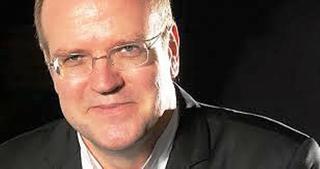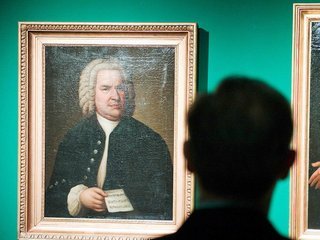|
Back
Smiles of a Summer Night New York
Zankel Hall, Carnegie Hall
06/20/2019 -
Johann Sebastian Bach: Aria with Diverse Variations for Harpsichord with Two Manuals: Goldberg Variations (Orchestrated by Bernard Labadie; American Premiere)
Orchestra of St. Luke’s, Bernard Labadie (Principal Conductor)

B. Labadie
“The Goldbergs... is a text reflecting on itself, satisfied in its own world, suggesting that everything you would ever want to know is contained within... Despite this, Bach's smile wins through. The piece is a lesson in many things, but primarily in wonder: the way that the tragic variations fuse seamlessly into the breathlessly comic, the way that simple scales become energy, joy, enthusiasm, the celebration of the most fundamental elements of music...”
Jeremy Denk (1970– ) quoted in The Guardian
“Torrents are lulled in brooks serene,
“Ill-tempered clavierists take merry chances.
“Labadie and spirit merge in joy. The Scene?
“Atop the Gold-Hill, stern Sebastian dances.”
The Reverend Samuel A. Dogg (Circa 18th Century)
Johann Sebastian Bach has been adorned with the most extravagant fashions devised by Stokowski and Mahler, Ormandy and Glazunov, more fit for a Mardi Gras than musician. So when Bernard Labadie was planning the final concert of a series called “Bach Transformed”, one had the feeling this Baroque specialist could have changed the ultimate keyboard-planned Goldberg Variations into a literal–and possibly superfluous-change of color.
What emerged last night, after all 30 variations and all the repeats had been performed, was the feeling that Mr. Labadie had written a work which would have been treasured by the composer (who was hardly averse to orchestrating fellow composers). As well Louis XIV in Versailles.
For as the anonymous quatrain above mentions, this two-hour spectacle was not Bach the organist or Bach the composer (“Masses Written While-U-Wait”) or Bach the Lutheran believer.
Last night we heard Bach the dancer.
Whatever the keyboard of the original Goldberg Variations (written, so the legend goes, to soothe an insomniac aristocrat with his own in-house musician), no percussion instrument can imitate the lightness, the subtle nuances, the lilting portamento of a string instrument. No clavier can chase itself around during each of the ten canons or show different timbres in the various movements.
Most of all, especially amongst the first 15 variations, Mr. Labadie allowed his instruments to show an endless variety of lithesome, classical, stately and popular dances.

Guido Bergmann’s J.S.Bach
One conventionally thinks that Leonard Bernstein was the first “serious” composer to write show tunes.
But Bach could and did surrender his gravest moments for these delicious melodies. His son once said that his father hated writing variations, a “thankless task due to the monotonous basic harmony.” The reality is that this was another challenge, even in his last completed keyboard work. And he had fun doing it.
Mr. Labadie’s “orchestration” was for strings only, along with lute and continuo. His credo? “Not to produce a faithful transcription of the work, but instead to assimilate the mindset of an 18th Century musician for whom naturalness was more important than respect for the notes.”
How he did this with his own Orchestra of St. Luke’s was fascinating. The 15 strings were spread out on the stage. During the tuttis (like the French-style overture, the 16th Variation), all of them rose as one. More frequently, he gave each variation to different soloists and chamber groups. They (let’s say two violists and the cello continuo) would stand for the solos–and a few measures before they ended, the next group would stand ready for their own solos.
What Mr. Labadie presented them was not a monolith of orchestral playing. No static stoniness, but a fluidity of music, a variety of colors, an ever-changing diversity. And with the Orchestra of St. Luke’s, he had string players who are so technically proficient that they honestly enjoyed having their moments in the spotlight, under the orchestrater/conductor’s baton.
This was playing which matched Mr. Labadie’s interpretations. The St. Luke’s players had energy (that overture), drama, sometimes whispering secrets (Variation 19), virtuosity (number 26), but above all, they had grace. That grace which is more often given as the secret to French Baroque music, for which J.S. Bach grudgingly accepted.
There is no reason to give the names of each and every player. They are all First Chairs in this version, but not a one of them stood out above the rest. This was ensemble playing, whether two (with lute plucking!) or the entire ensemble.
The solstice was set for the following day, but Mr. Labadie and his wonderful artists provided what could rightly be called a summery execution. Words, though, are irrelevant. Mr. Labadie and the Orchestra of St. Luke’s provided more energy than mere elegance, more color than mere counterpoint, and, in Mr. Labadie’s so appropriate words, “a living entity that transforms itself as it transforms us...”
Harry Rolnick
|